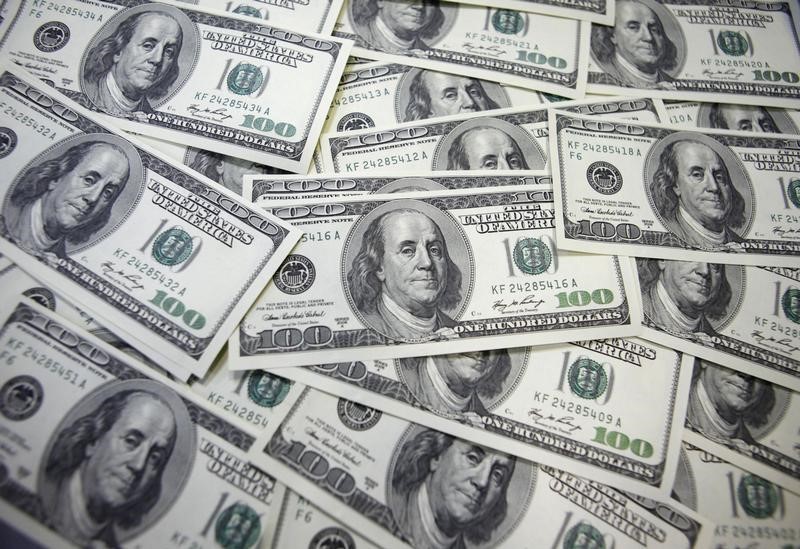By Anirban Nag
LONDON (Reuters) - The dollar index recovered from a five-month low on Friday, but was still on track for a third straight week of losses, as investors cut favorable bets after the Federal Reserve appeared cautious about raising rates at a steady pace this year.
The dollar was flat against the yen, having hit a 17-month low on Thursday, with traders worried that a sharp rise in the Japanese currency would elicit some kind of intervention from the Bank of Japan.
The dollar was trading at 111.41 yen
All this saw the dollar index (DXY) trade 0.25 percent higher at 95.001, having fallen to a five-month trough of 94.578 in Asian trade. It was set to end the week 1.2 percent lower.
"At these levels, the market is nervous about pushing dollar/yen too far lower just in case there is some response from the BOJ," said Yujiro Goto, currency strategist at Nomura.
The dollar has fallen sharply since the Federal Reserve lowered its expectations for interest rate increases this year at the midweek Federal Open Market Committee (FOMC) meeting. Treasury yields have slid since the policy meeting, fuelling the dollar's fall. [US/]
"Short-term speculators are leading the action. They appear to be selling the dollar and Japanese stocks in tandem, trying to probe for a bottom," said Kaneo Ogino, director at foreign exchange research firm Global-info Co in Tokyo.
"They are testing to see if the trough of the recent 110-115 yen range can hold," he said.
The dollar's post-FOMC weakness against the yen presents a headache for Japan. The country would like to see the yen remain relatively weak to support its exporters, but the market thinks Japan has to tread carefully lest it is accused of engineering competitive devaluations.
The dollar's weakness poses a challenge to the European Central Bank, too. The ECB eased extensively last week, hoping to weaken the euro somewhat and boost inflation.
But some banks are already revising their euro/dollar forecasts higher. Dutch bank ABN-Amro on Friday said it expected the euro to trade around $1.15 in the foreseeable future with a further adjustment in Fed rate hike expectations likely to see the euro touch $1.20.

"The longer-term picture has changed for the dollar," said Georgette Boele, analyst at ABN Amro. "We think the multi-year bull trend of the dollar has come to an end. So if the range in euro/dollar is broken, it will likely be on the dollar weakness side, in our view."
(additional reporting by Shinichi Saoshiro; Editing by Toby Chopra)